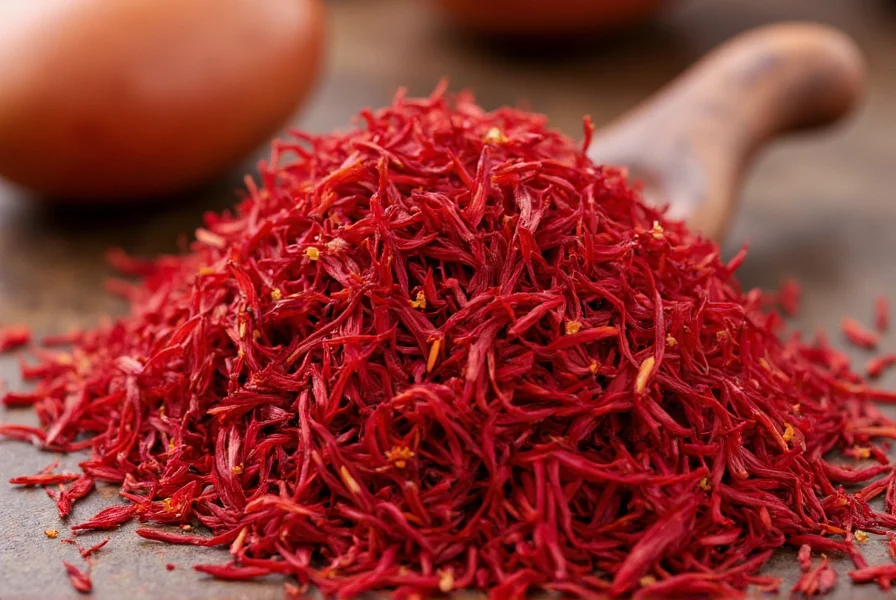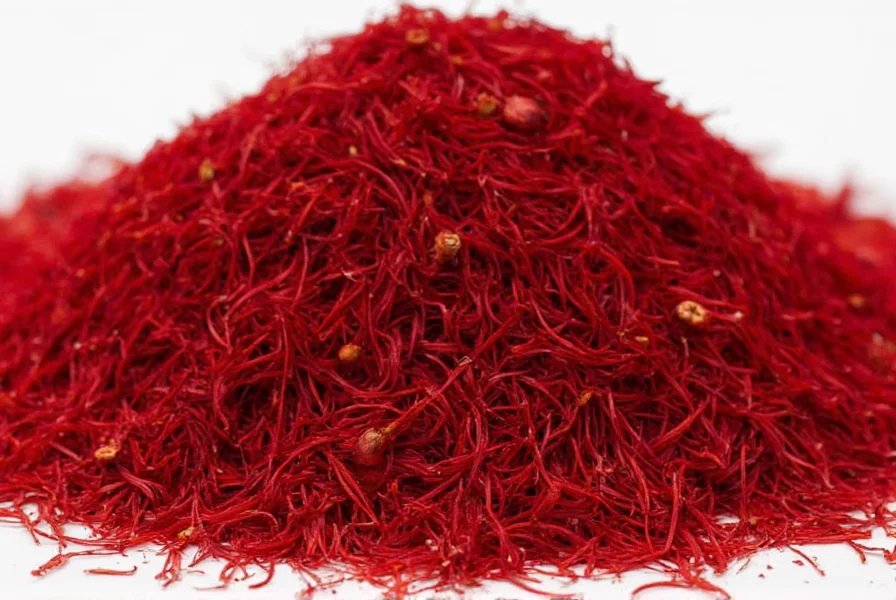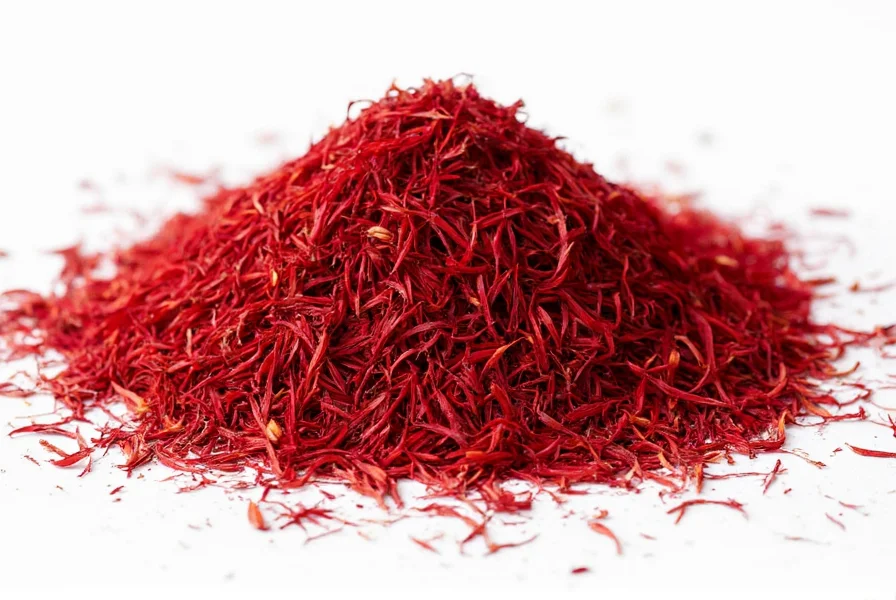Saffron's extraordinary value stems from its labor-intensive harvesting process. Each purple crocus flower produces only three delicate red stigmas, which must be hand-picked at dawn when the blooms are still closed. It takes approximately 150,000 flowers—or 450,000 individual stigmas—to yield just one kilogram of dried saffron. This meticulous process, combined with the flower's limited growing regions primarily in Iran, Spain, and India, explains why genuine saffron commands prices ranging from $5,000 to $10,000 per kilogram.
Botanical Origins and Historical Significance
The Crocus sativus plant, a sterile triploid that cannot reproduce naturally, has been cultivated for over 3,500 years. Historical evidence suggests saffron originated in Southwest Asia, with early cultivation documented in ancient Persian, Egyptian, and Mediterranean civilizations. Ancient texts describe its use not only as a culinary ingredient but also as a dye, medicine, and even ritual offering. The spice traveled along early trade routes, becoming integral to Spanish paella, Indian biryani, Persian tahdig, and French bouillabaisse.
Saffron Production Process
Understanding what saffron is requires examining its complex production cycle:
- Planting: Corms (bulb-like structures) are planted in late summer
- Blooming: Flowers emerge for just 1-2 weeks each autumn
- Harvesting: Flowers must be picked before sunrise to preserve quality
- Processing: Stigmas are carefully removed by hand within hours of picking
- Drying: Stigmas are dried using traditional methods to preserve compounds
This labor-intensive process represents why saffron is so expensive compared to other spices. Unlike machine-harvested spices, saffron requires skilled human hands at every stage, with workers often earning less than $10 per day despite the spice's high market value.
| Saffron Grade | Color Strength (ASTA) | Stigma Composition | Flavor Profile |
|---|---|---|---|
| Grade I (Coupe) | 190-250 | 100% red stigma tips | Most intense, complex |
| Grade II (Mancha) | 150-190 | Red stigma with minimal yellow style | Strong, slightly less complex |
| Grade III (Sierra) | 80-150 | Significant yellow style included | Milder, less distinctive |
Authentic Saffron vs. Counterfeits
When learning how to identify real saffron, consumers should understand common adulteration methods. Unscrupulous sellers often mix saffron with:
- Red-dyed corn silk or coconut fibers
- Cheaper safflower or marigold petals
- Artificially colored paper strands
- Lower-grade saffron with excessive yellow style
Authentic saffron identification involves several tests. Genuine threads should feel slightly moist but not brittle, release color gradually in warm water (not instantly), and have a sweet-honey aroma rather than a medicinal smell. The soak test is particularly revealing: real saffron produces a rich golden-yellow hue, while fakes often create an orange or red tint.

Culinary Applications and Proper Usage
Saffron uses in cooking require careful handling to maximize its potential. Professional chefs typically:
- Crush threads gently with a mortar and pestle before use
- Steep in warm liquid (not boiling) for 15-20 minutes to release compounds
- Use sparingly—a pinch (about 20 threads) suffices for four servings
- Add early in cooking to allow flavor integration
Understanding saffron definition extends to recognizing its flavor profile: subtle earthiness with floral notes, slightly sweet with a hint of metallic bitterness. Unlike turmeric (often confused with saffron), which provides color without complex flavor, genuine saffron transforms dishes with both visual appeal and distinctive taste. Common applications include Spanish paella, Italian risotto alla Milanese, Persian jeweled rice, and Scandinavian baked goods.
Storage Recommendations for Maximum Longevity
Preserving saffron quality requires proper storage techniques. Exposure to light, heat, and moisture rapidly degrades saffron's volatile compounds. For optimal preservation:
- Store in airtight, opaque containers away from light
- Maintain cool temperatures (below 20°C/68°F)
- Avoid humidity (ideal relative humidity: 40-60%)
- Whole threads retain quality longer than powdered saffron
- Properly stored, high-grade saffron maintains quality for 2-3 years

Scientific Research on Saffron Properties
While traditional medicine has attributed various health benefits to saffron for centuries, modern research provides more nuanced understanding of saffron health properties. Studies suggest potential applications related to:
- Mood regulation (particularly mild to moderate depression)
- Antioxidant properties combating oxidative stress
- Eye health support, particularly for age-related macular degeneration
- Appetite regulation and potential weight management support
It's important to note that most research uses concentrated extracts rather than culinary amounts. The quantities typically used in cooking provide flavor and color but likely insufficient concentrations for significant physiological effects. Consumers should view saffron primarily as a culinary spice rather than a therapeutic agent.
Frequently Asked Questions About Saffron
What makes saffron the most expensive spice in the world?
Saffron's extraordinary cost stems from its extremely labor-intensive harvesting process. Each Crocus sativus flower produces only three stigmas that must be hand-picked at dawn. It takes approximately 150,000 flowers (450,000 stigmas) to produce just one kilogram of dried saffron. The entire harvesting window lasts only 1-2 weeks each autumn, requiring massive temporary labor forces in growing regions.
How can I tell if saffron is authentic or fake?
Authentic saffron identification involves several tests: genuine threads should feel slightly moist but not brittle, release color gradually in warm water (not instantly), and have a sweet-honey aroma. The soak test is particularly revealing—real saffron produces a rich golden-yellow hue, while fakes often create an orange or red tint. Avoid saffron that's suspiciously cheap, as genuine saffron costs $5,000-$10,000 per kilogram.
What's the difference between saffron and turmeric?
While both provide yellow color, saffron and turmeric are completely different. Saffron comes from crocus flower stigmas and offers complex flavor with floral notes, while turmeric is a root in the ginger family with earthy, slightly bitter taste. Saffron contains crocin (color), picrocrocin (flavor), and safranal (aroma), whereas turmeric's main compound is curcumin. Saffron is dramatically more expensive and used in smaller quantities than turmeric.
How should I properly use saffron in cooking?
For optimal saffron usage, gently crush threads with a mortar and pestle, then steep in warm (not boiling) liquid for 15-20 minutes before adding to your dish. A pinch (about 20 threads) typically suffices for four servings. Add early in cooking to allow flavor integration. Never add dry threads directly to dishes, as this prevents proper release of flavor compounds and results in uneven distribution.
What are the primary growing regions for authentic saffron?
Over 90% of the world's saffron comes from Iran, particularly the Khorasan region. Other significant producers include Spain (especially La Mancha region), India (Kashmir valley), Greece (Krokos region), and Morocco. Climate conditions—hot dry summers and cold winters with adequate autumn rainfall—are essential for successful saffron cultivation, limiting viable growing regions worldwide.











 浙公网安备
33010002000092号
浙公网安备
33010002000092号 浙B2-20120091-4
浙B2-20120091-4